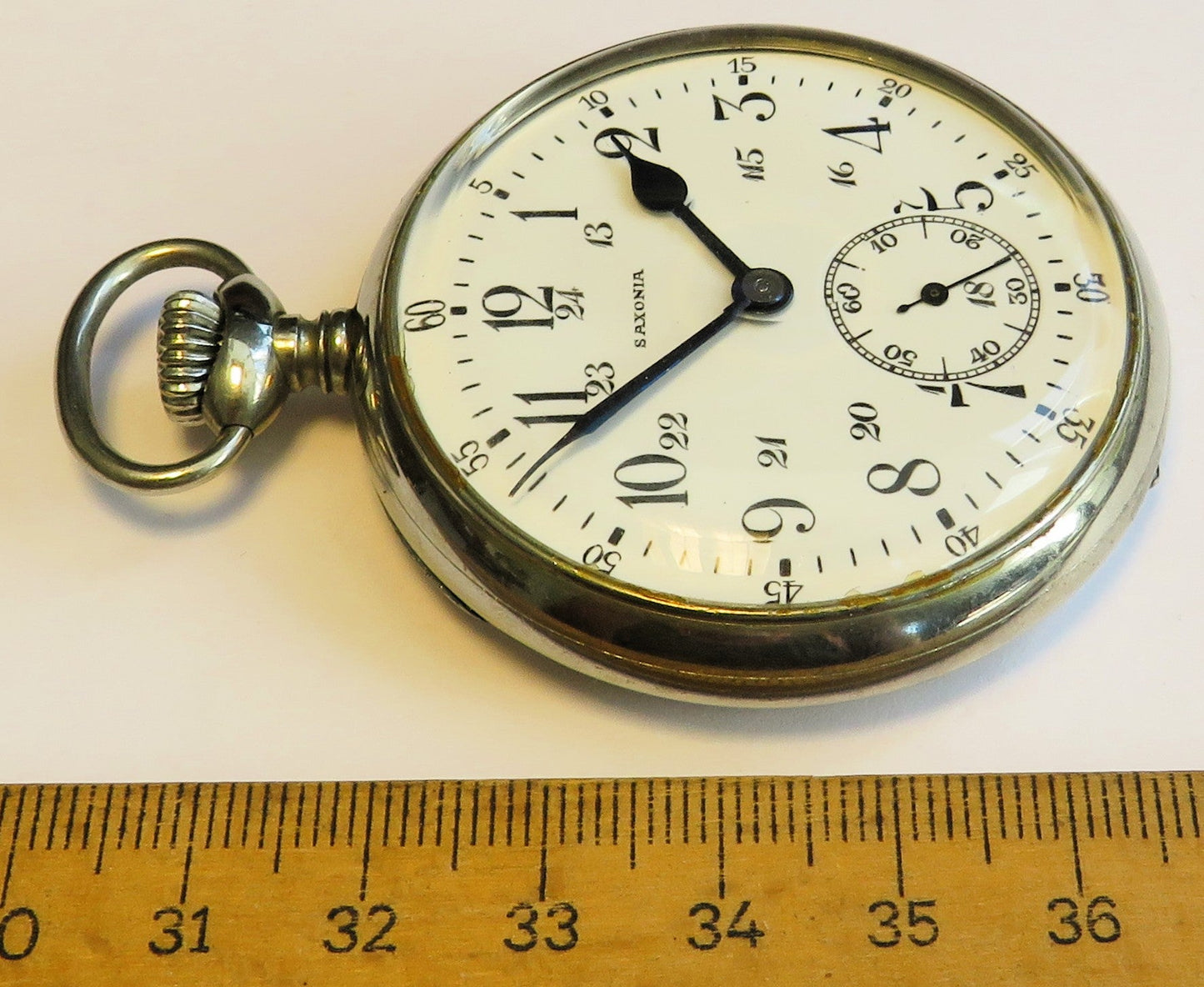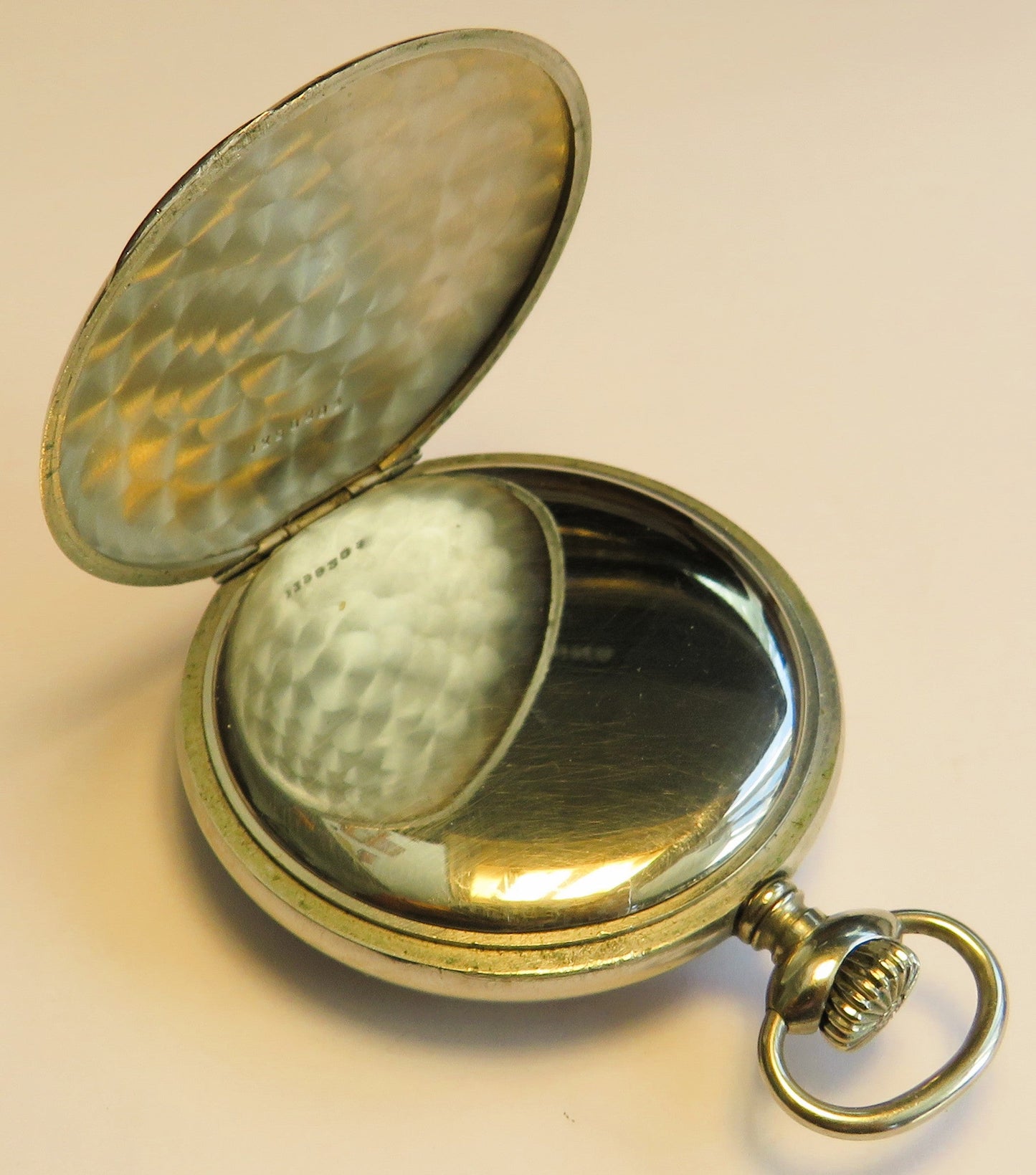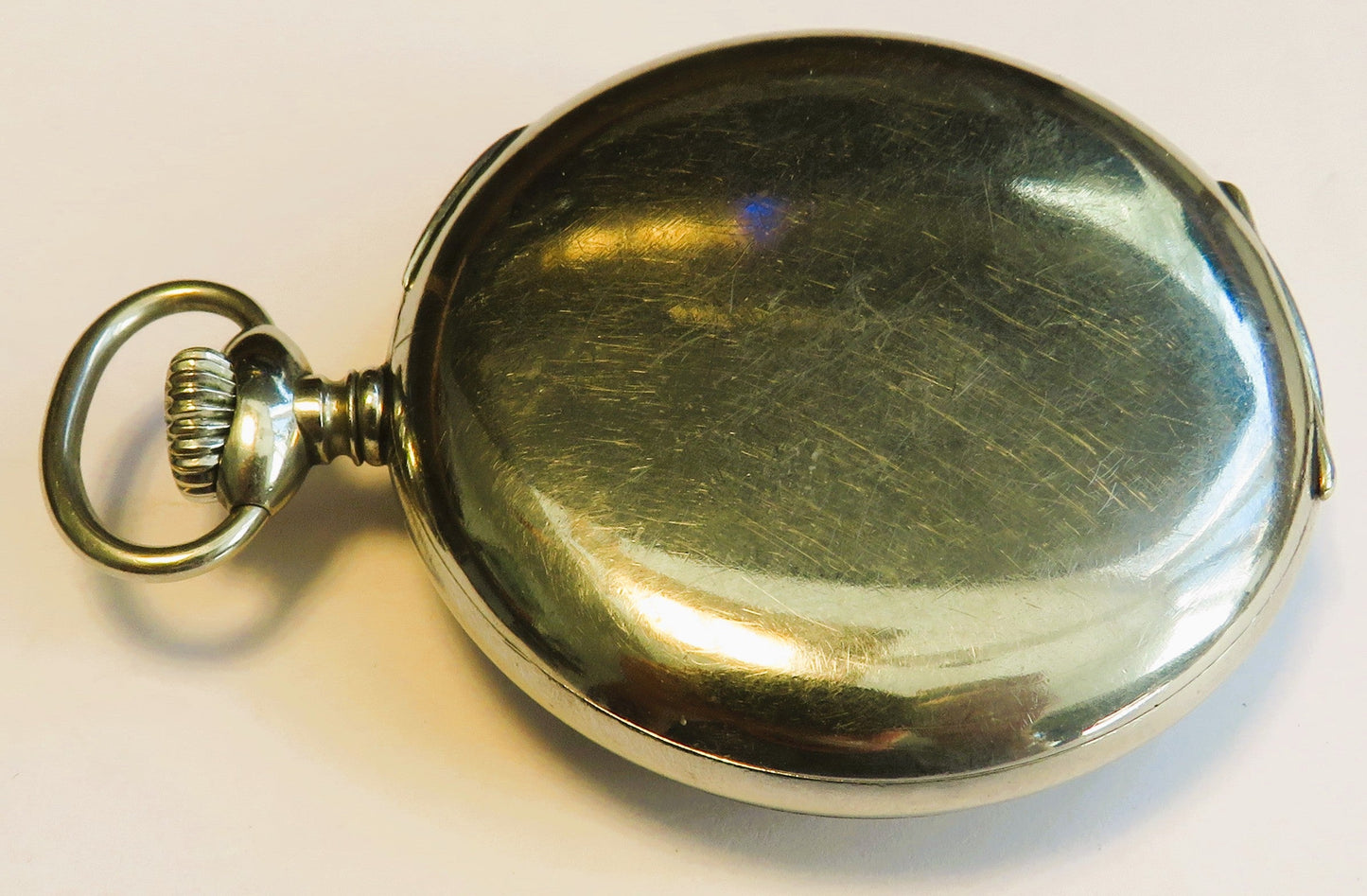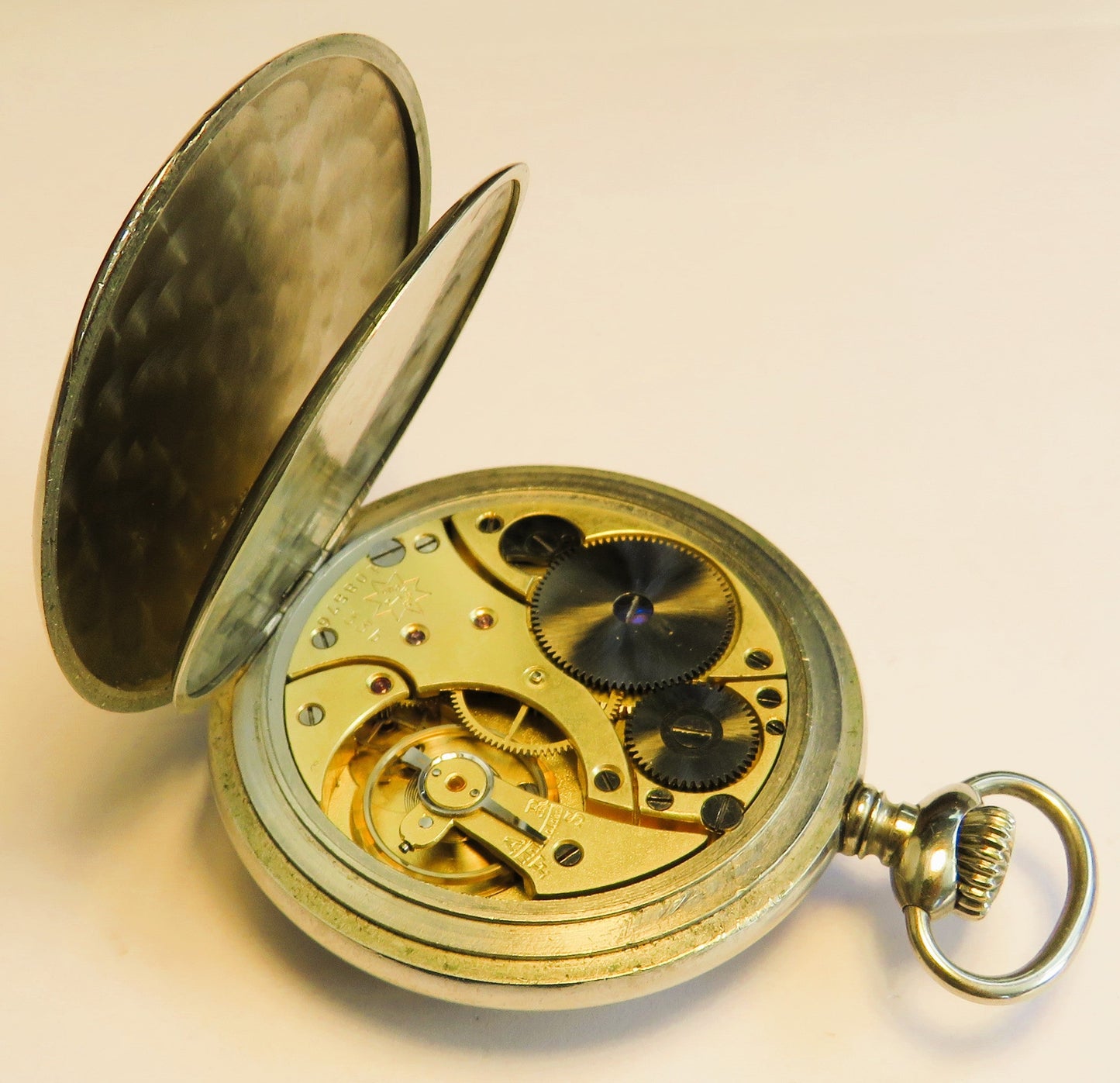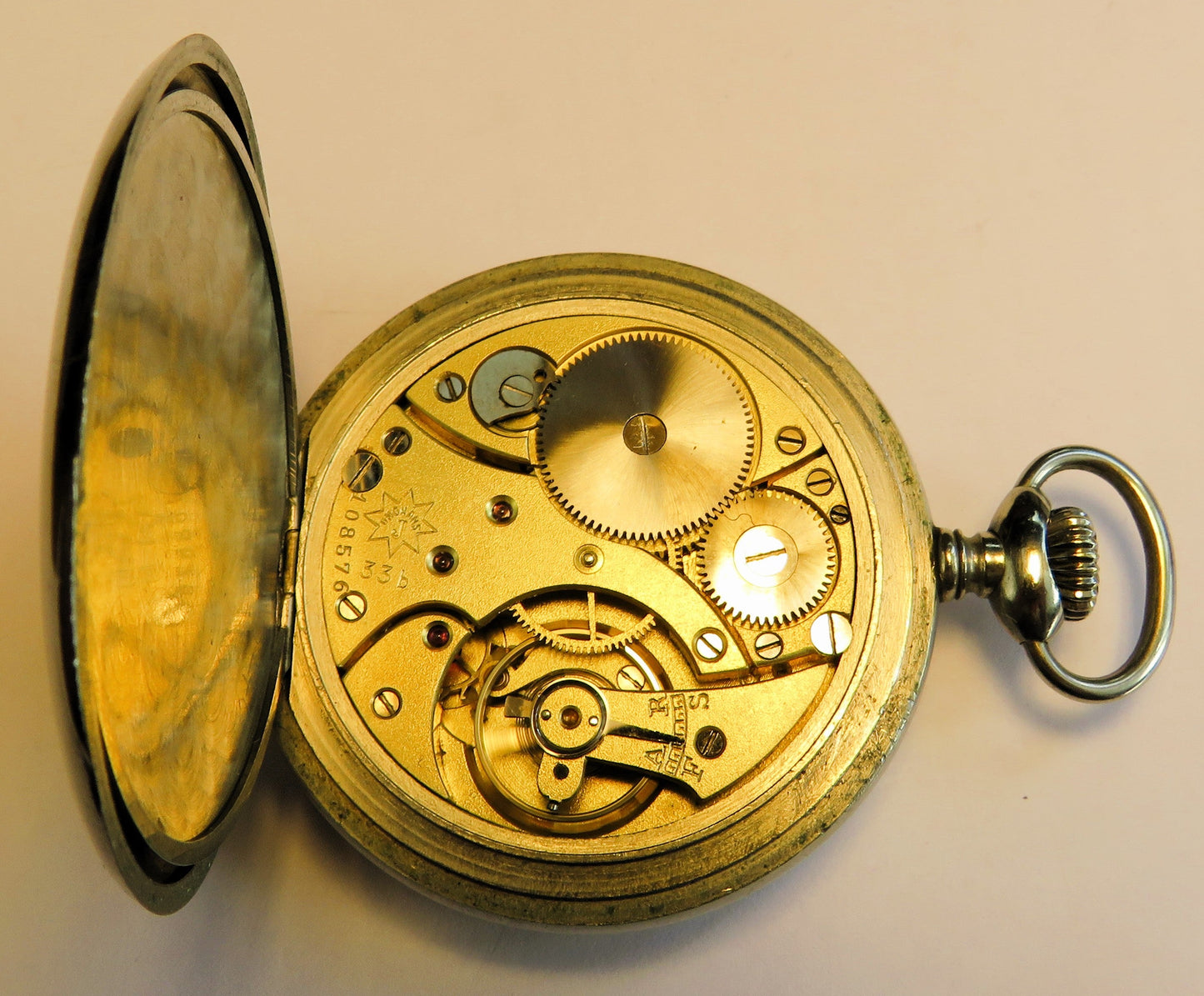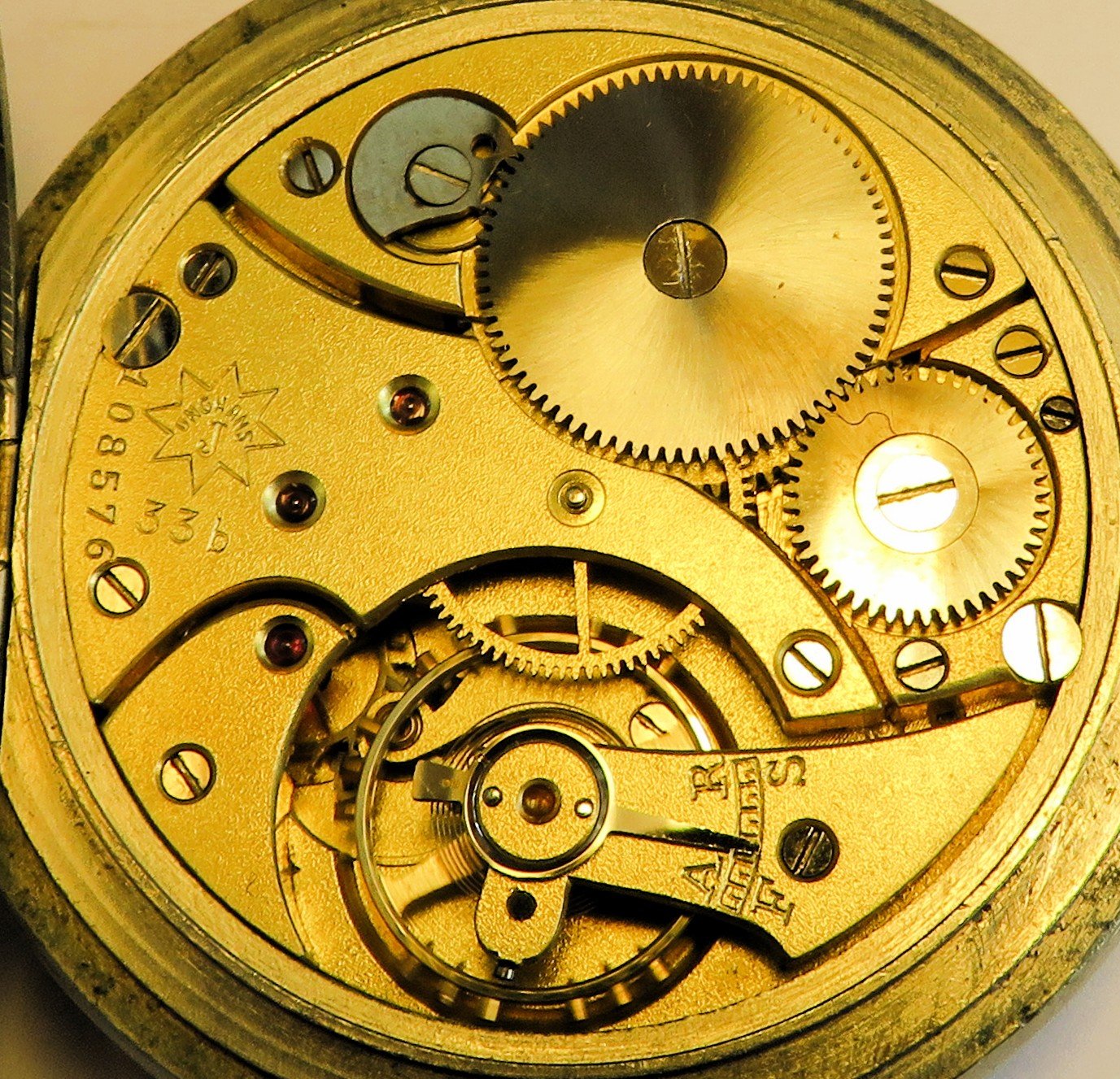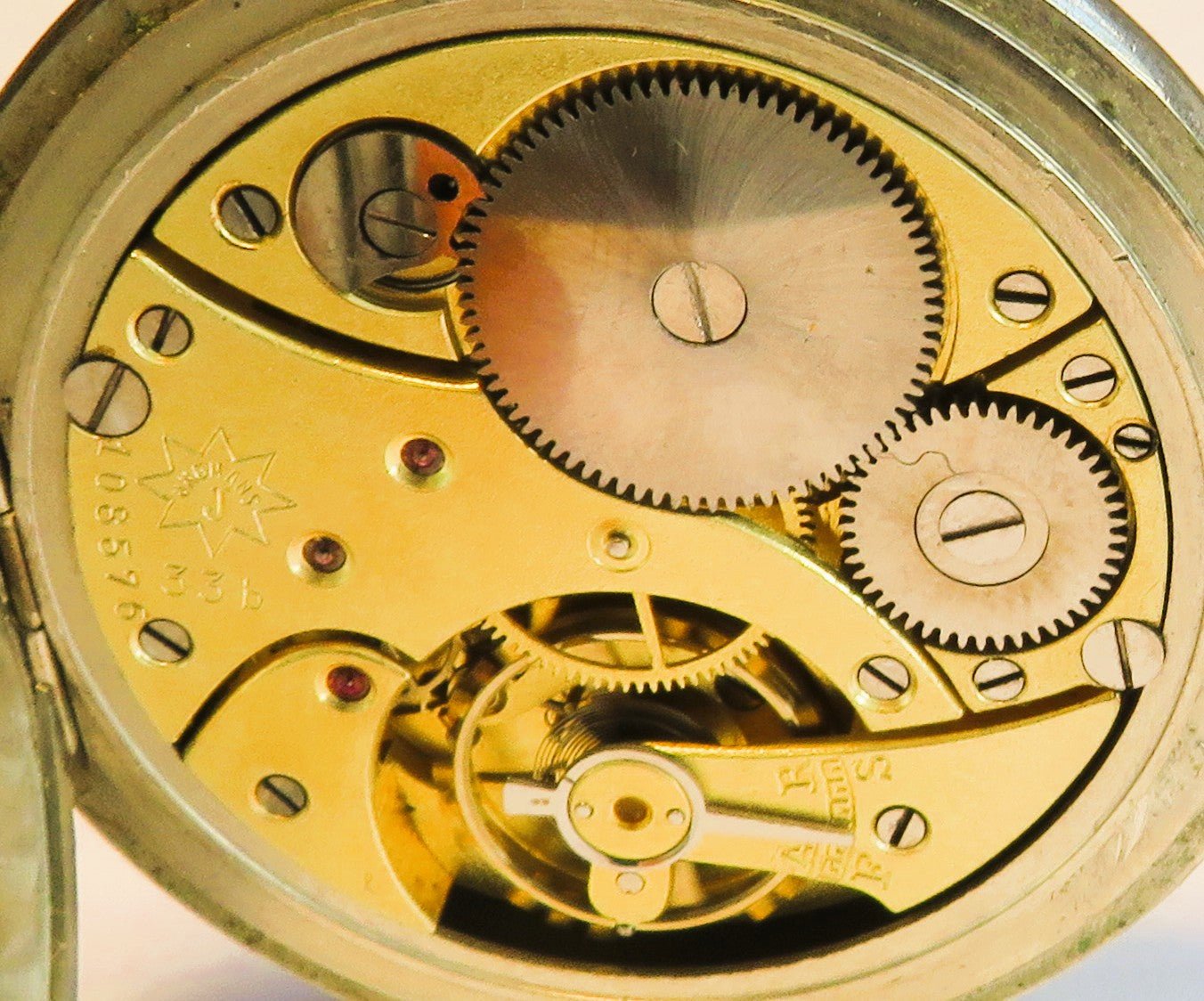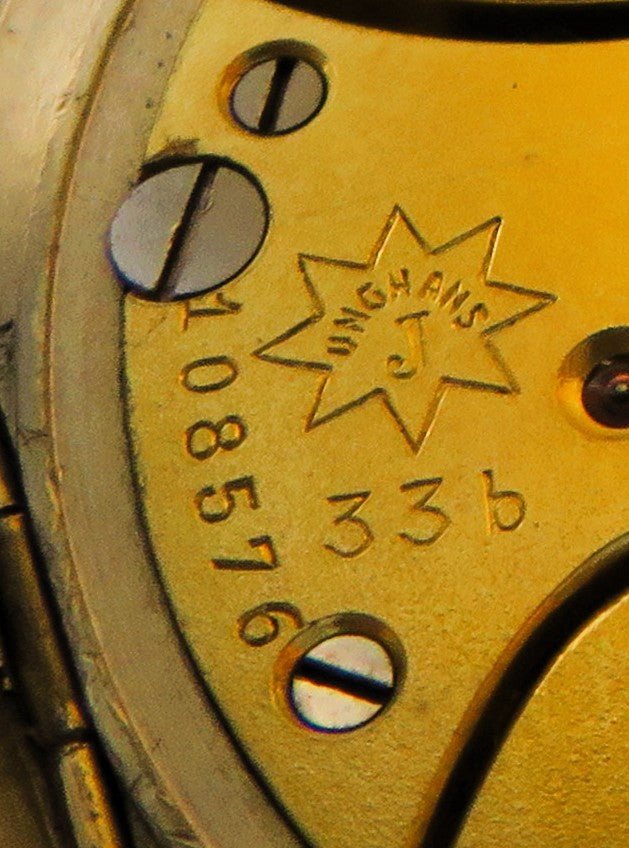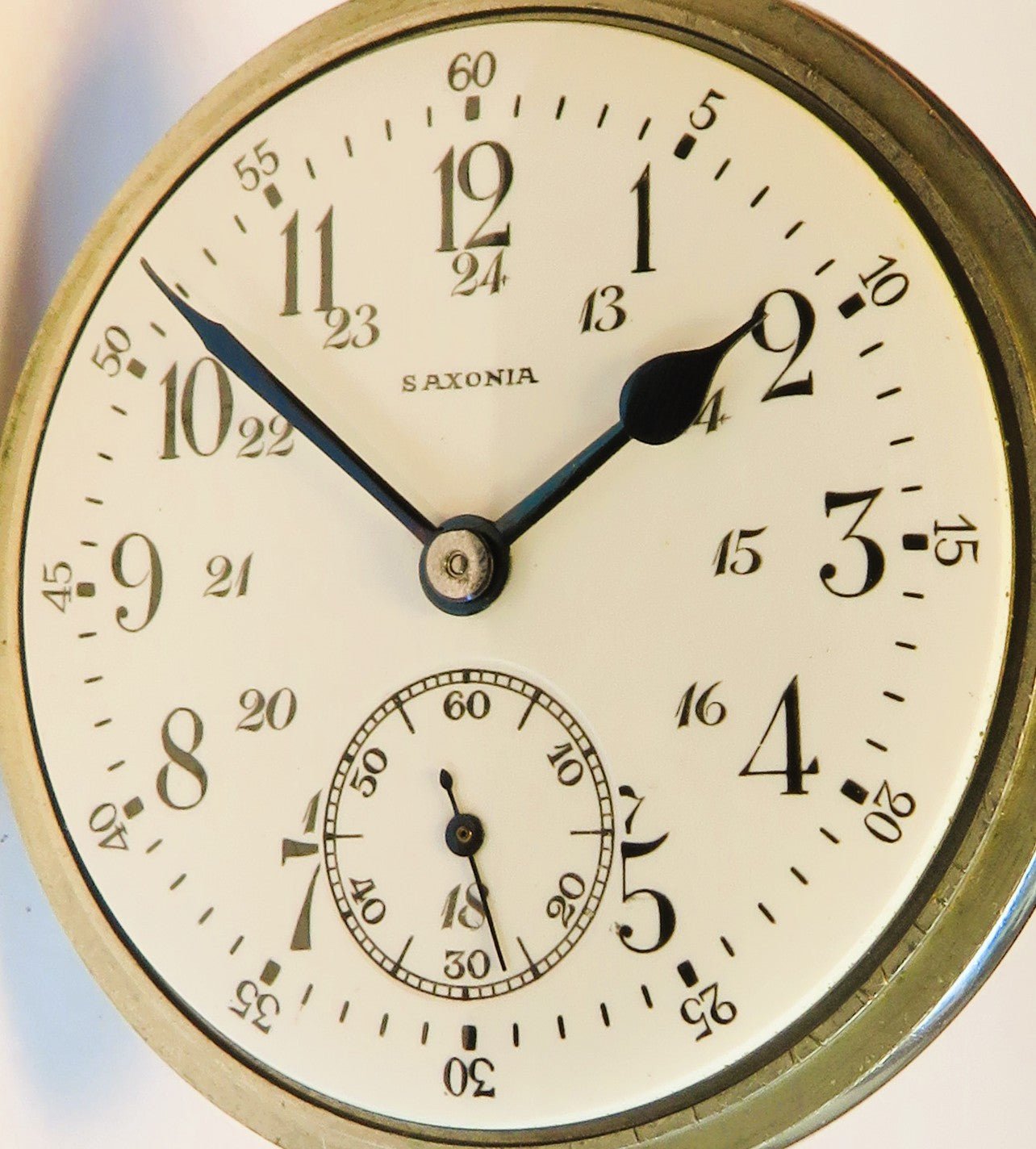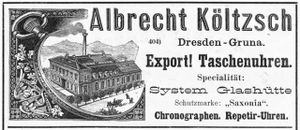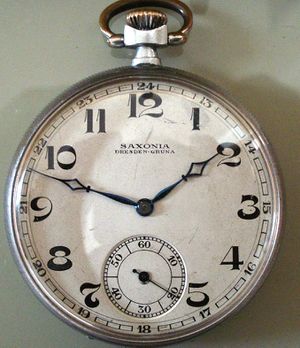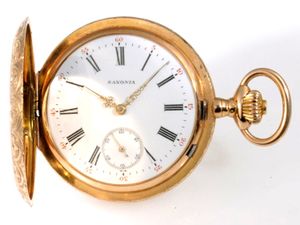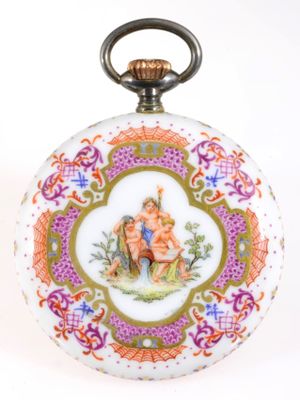Sammler-Uhren
Saxonia Dresden Gruna Költzsch large railway clock ca. 1920 Junghans 33 b movement
Saxonia Dresden Gruna Költzsch large railway clock ca. 1920 Junghans 33 b movement
Couldn't load pickup availability
Albrecht Költzsch (watchmaking)
German Watch Factory
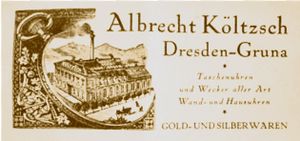
Dresden Gruna
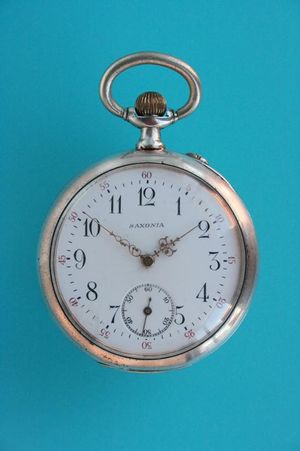
Story
Albrecht Költzsch founded a watch factory in Gruna near Dresden . In addition to pocket watches , alarm clocks and pendulum clocks, the company also offered diamonds, gold and silverware . In his advertisements, Költzsch gives the year 1878 as the founding date. However, the watch factory itself was not registered until 1890 with its headquarters in Gruna at Reicker Str. 4. From 1878 until the founding of the factory, Költzsch's years were spent primarily as a traveling salesman; Berlin was considered the company's headquarters until it was founded in Dresden. Albrecht Költzsch probably died before the move to Saxony. At this time, the company was continued under the old name by Költzsch's partner Christian Friedrich Schlott .
Albrecht Költzsch Dresden
The property owner Hietzig planned new buildings around the Reicker Straße site. His construction projects necessitated an extension of this street. Today's Liebstädter Straße, south of Winterbergstraße to the Landgraben, was built by Hietzig in 1897 [1] and opened to public traffic in 1898. This extension resulted in a renumbering of the properties and buildings: Reicker Straße 4 is now listed as Reicker Straße 20.
On 1 April 1901, Gruna was incorporated into Dresden. The Reicker Straße was renamed after the town of Liebstadt by resolution of 11 November 1903 [2] . This also changed the company address from
Albrecht Költzsch
Reicker Str. 20
Dresden / Gruna 35
in
Albrecht Költzsch
Liebstädter Straße 20 ( show this location )
Dresden / Gruna 35
New sales channels
The Költzsch watch factory received considerable attention in trade magazines of the time for its innovative sales concept. Local watch shops complained about the new competition's "peddling" and "payment by installments." But even in court, they were unable to prevail against the new competitor.
The company primarily sold directly to railway workers. This, along with the frequently used relief depictions of locomotives on the case, often leads collectors to mistakenly label Saxonia watches as railway workers' watches .
Around 1910, the company sold pocket watches with Swiss movements under the sales name SAXONIA .
Often Saxonia brand pocket watches are called "railwaymen's watches" because of the depiction of a railway on the case cover. However, there is no evidence to date that Albrecht Költzsch was an official supplier to a railway company. The steam locomotive depicted is also not identical to the first functioning German steam locomotive, the Saxonia, manufactured in 1838 by the Übigau Mechanical Engineering Institute near Dresden, but rather depicts the Saxon steam locomotive, type 2'Bn2 or 2'Bn2v.
It is more likely that Költzsch wanted to use the brand name Saxonia (Latin for Saxony) to represent a reference to his Saxon homeland and the achievements of Saxony. The Saxonia steam locomotive was developed by Johann Andreas Schubert (founder of the "Royal Technical Educational Institute Dresden," which is considered the predecessor of the TU Dresden), built by the Übigau Mechanical Engineering Institute , and put into service by the Leipzig-Dresden Railway Company . The bridge depicted on the case cover shows the Marienbrücke (built in 1852) in Dresden and the Elbe River. If the reference to a railway clock were more likely, Költzsch would probably have chosen the Riesa Elbe Bridge, which was built in August 1836 as part of the construction of the Leipzig-Dresden railway line , for his Clocks are shown.
Albrecht Költzsch promotes his Saxonia brand watches as a specialty in the portable precision watch market segment. The affinity with railway timepieces created by the depiction of a railway on Saxonia watches could thus be a clever marketing strategy. This theory is also supported by the use of theSystem Glashütte logo. The company used Swiss ebauches and finished movements from Zenith and Revue Thommen , for example, for its watches.
The affinity for the railway certainly had a marketing background. Along with the Neuwied-based company Bellana, Saxonia was very active in the railway community. Both companies were able to market their products as "official railway service watches" within the Deutsche Bundesbahn (German Federal Railway). The process was roughly as follows:
Every year, a representative of these companies visited major DB offices and displayed the collection. When purchasing a watch, which was usually in the mid- to high-price range, customers could take advantage of interest-free installment payments. The corresponding installments were deducted directly from their wages. This meant that railway workers could purchase high-quality watches under favorable conditions.
Saxonia watches were offered in the railway sector until around 1990. Bellana watches were offered for a few years longer.
After the Second World War, the Albrecht Költzsch company was based in Rösrath, still selling pocket watches with Unitas 6498 movements under the name Saxonia . Wristwatches were also part of the product range, including Enicar watches bearing the Saxonia logo. The company existed until 1954. The last owner was A. Eichhorn .
In Klassik Uhren No. 6 - 2012, November/December, Dr. Laus Pöhlmann writes a detailed article about Saxonia pocket watches by Albrecht Költzsch


